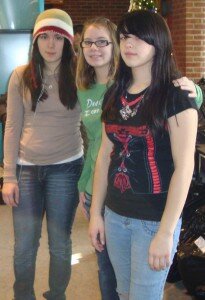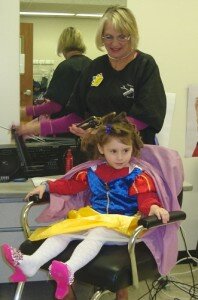by Katrina Kibben & Veronica Parages
This post originally appeared on Monster.com’s blog and it is republished here with their permission.
Volunteering can be a great way to network and gain career skills while helping give back to the community. Monster recently teamed up with Points of Light Institute- HandsOn Network as part of our 2010 Keep America Working Tour to deliver volunteer opportunities to job seekers.
We spoke with Veronica Parages, Director, Skills-Based Volunteering at Points of Light Institute – HandsOn Network to get more information about how volunteering can benefit your job search. A French native and cooking enthusiast, Veronica is going to take a crack at using cooking as a reference point to answer some questions about her other passion: volunteerism!
Are volunteer organizations looking for a specific age range? Is it better to be older, younger, or can anyone with a passion to help others volunteer?
Any age is perfect! Volunteering on a project is like helping in the kitchen. Even if you don’t know how to cook, everyone has unique skills and talents that can be put to use. The same is true for volunteering- you have skills that can help others, professional or personal, and as long as you’re willing to give it a try, volunteer organizations will help you find a project that meets your competencies.
How can volunteering help a job search? Does it help with networking?
Let’s use another cooking reference. Suppose you know a good Chef, an expert who was recently laid off during these tough economic times. Without a full time job, a chef could choose to stay in bed all day. But, because they’re helping the food bank to find new resources, they’re meeting vendors to get some fresh ingredients for free. They feel helpful and productive, and stay engaged in the community. In the process, they meet new people, expanding their network of contacts. A growing network is one way to increase your chances of finding employment and it all started with volunteering.
How do you see volunteerism playing into a larger career development strategy?
Chefs aren’t born cooking- they must learn. Volunteering your expertise, sometimes working completely outside your normal realm, could help you develop leadership skills. Suddenly you’ve got a whole new set of skills to offer an employer and again, more opportunities to find a new job. Plus, volunteering is a great way to try something new in a low risk environment. Who knows- you may find your true passion in the process.
What tips do you have for people who might be volunteering for the first time?
- Be open-minded: Skills-based volunteering is a new world that can give you a lot but is quite different from a business environment!
- Nonprofit organizations need help to be helped: Here is an example: I was talking to a young volunteer when I discovered he specialized in logistics. He was currently volunteering every Saturday for a food bank delivering meals. He liked what he was doing but was disappointed that the distribution system wasn’t efficient and that he was not delivering to the same families every week. I suggested he offer up his logistics knowledge to the food bank to help reorganizing the food distribution. His skills and help would be appreciated and he, and the other volunteers, would be able to have more impact as they continued their food deliveries. Be proactive in proposing your talents, skills, and knowledge.
- Be creative! This is your opportunity! Constraints and lack of resources in the nonprofit sector shouldn’t stop you! Think outside the box, put your “noodles” to find solutions… it is worth it
What’s the most unique or offbeat volunteer organization you know of?
HandsOn Network of course!! We are always trying to find new recipes and skills-based volunteering is just one. We want to connect the right volunteer with the right skills to the right project for a major impact- how great is that! Contact HandsOn Network at one of its 242 Action Centers across the United States to discover skills-based volunteering initiatives or to find the right project for you check out the Hands On Network website. If you are interested by the subject, the National Conference of Volunteering and Service is offering plenty of opportunities to learn more about skills-based volunteering, just click here!
Now – get out there and start cooking, I mean, volunteering your skills!
Want to learn more about volunteering to develop your professional skills while you’re unemployed? Check out this video with a volunteer answering a frequently asked question about volunteering.
Also, if you’re interested in a culinary career, check out our community- Chef’s Blade.


 o now that I’ve signed up who should I fundraise for? Any suggestions?
o now that I’ve signed up who should I fundraise for? Any suggestions? By Marcia Bullard
By Marcia Bullard


 The student volunteers have a variety of
The student volunteers have a variety of 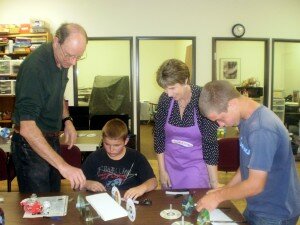
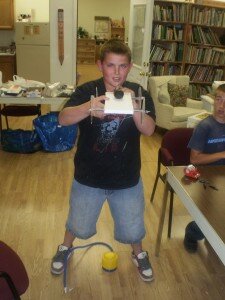 At the end of the school year the students proudly presented me with a handmade card signed by each of them telling me how much they appreciated the opportunity of volunteering and all that they learned.
At the end of the school year the students proudly presented me with a handmade card signed by each of them telling me how much they appreciated the opportunity of volunteering and all that they learned.
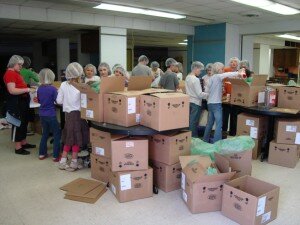 xactly where the volunteer opportunity will be taking place.
xactly where the volunteer opportunity will be taking place.